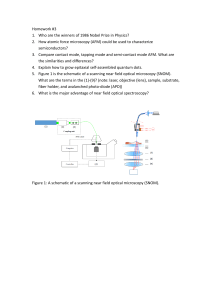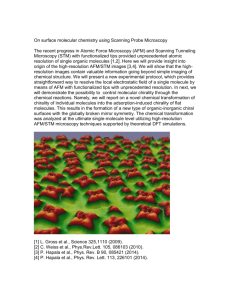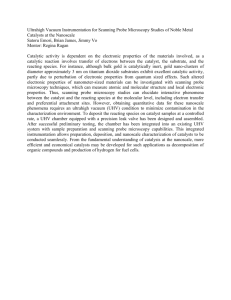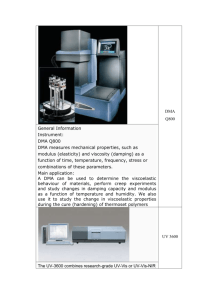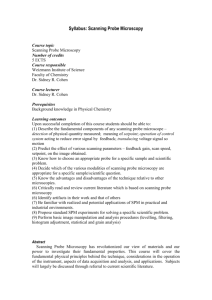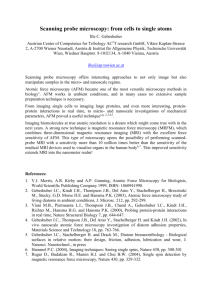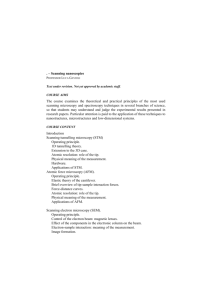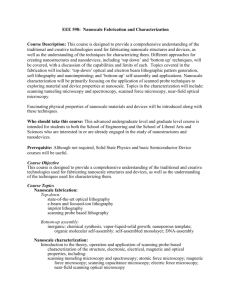Паспорт совместного российско
advertisement
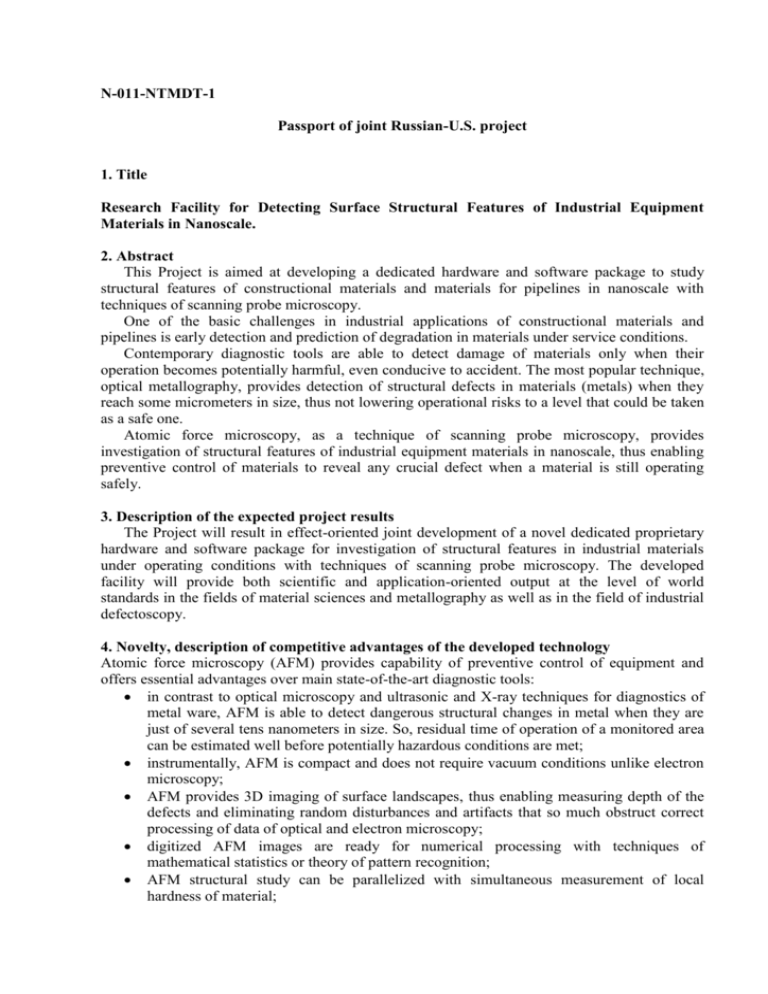
N-011-NTMDT-1 Passport of joint Russian-U.S. project 1. Title Research Facility for Detecting Surface Structural Features of Industrial Equipment Materials in Nanoscale. 2. Abstract This Project is aimed at developing a dedicated hardware and software package to study structural features of constructional materials and materials for pipelines in nanoscale with techniques of scanning probe microscopy. One of the basic challenges in industrial applications of constructional materials and pipelines is early detection and prediction of degradation in materials under service conditions. Contemporary diagnostic tools are able to detect damage of materials only when their operation becomes potentially harmful, even conducive to accident. The most popular technique, optical metallography, provides detection of structural defects in materials (metals) when they reach some micrometers in size, thus not lowering operational risks to a level that could be taken as a safe one. Atomic force microscopy, as a technique of scanning probe microscopy, provides investigation of structural features of industrial equipment materials in nanoscale, thus enabling preventive control of materials to reveal any crucial defect when a material is still operating safely. 3. Description of the expected project results The Project will result in effect-oriented joint development of a novel dedicated proprietary hardware and software package for investigation of structural features in industrial materials under operating conditions with techniques of scanning probe microscopy. The developed facility will provide both scientific and application-oriented output at the level of world standards in the fields of material sciences and metallography as well as in the field of industrial defectoscopy. 4. Novelty, description of competitive advantages of the developed technology Atomic force microscopy (AFM) provides capability of preventive control of equipment and offers essential advantages over main state-of-the-art diagnostic tools: in contrast to optical microscopy and ultrasonic and X-ray techniques for diagnostics of metal ware, AFM is able to detect dangerous structural changes in metal when they are just of several tens nanometers in size. So, residual time of operation of a monitored area can be estimated well before potentially hazardous conditions are met; instrumentally, AFM is compact and does not require vacuum conditions unlike electron microscopy; AFM provides 3D imaging of surface landscapes, thus enabling measuring depth of the defects and eliminating random disturbances and artifacts that so much obstruct correct processing of data of optical and electron microscopy; digitized AFM images are ready for numerical processing with techniques of mathematical statistics or theory of pattern recognition; AFM structural study can be parallelized with simultaneous measurement of local hardness of material; AFM has been successful in various studies of structural and mechanical characteristics of different materials. 5. Expected effect of the project results Volume of industrial production grows year by year and requirements on interrepair time, reliability and fail-safety become stronger. However, contemporary diagnostic techniques may not provide complete testing of materials under service conditions "on site" and so hamper further progress in industry. The package to be developed will significantly improve efficiency of industrial defectoscopy. 6. Proposed participants of the project consortium (research, education, commercial) 1. State Research Institute for Problems in Physics named after F.V.Lukin. Prof. Baskin Vladimir Anatolyevich, General Director. 2. NT-MDT Co. Prof. Victor Aleksandrovich Bykov, President. 3. Faculty of Biology, Moscow State University. VNIIOFI. 7. Preliminary plan of project preparation and performance, main project milestones The Project is meant for four years. It includes the following stages: 1st stage – conceptual design of the measurement complex based on a scanning probe microscope, carrying out scientific research; 2nd stage – building up and testing a prototype of the measurement complex; 3rd stage – operational development of the prototype, field tests; 4th stage – producing demonstration kits of the measurement complex and introduction of the developed product into the market.
